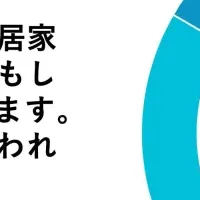
Innovative Chest Tube Technology Offers New Hope for Post-Surgical Pain Management While Reducing Opioid Dependency
A Revolutionary Solution for Post-Surgical Pain
Introduction
In recent years, there has been a growing concern over the use of opioids in post-surgical recovery. While these powerful pain relievers are often necessary, excessive use can lead to dependency and other serious complications. With approximately 3.9 million chest tubes placed in the United States each year, an innovative solution from the University of Colorado Anschutz Medical Campus aims to address this issue and transform the way we manage pain for surgical patients.
The Problem of Pain after Surgery
Patients undergoing cardiothoracic surgery frequently experience significant discomfort due to chest tubes, which are vital for draining excess fluid and preventing complications. Jessica Rove, MD, a respected surgeon at CU School of Medicine, has emphasized that even patients who do not have a history of opioid use often require prescription painkillers long after their procedures. In fact, one in eight patients may still be using opioids 90 days post-surgery, indicating that there are substantial pain management gaps.
The Innovation: Lidocaine-Coated Chest Tubes
Recognizing the impact of pain during recovery, Dr. Rove and bioengineer Daewon Park, PhD, have developed a breakthrough called the Colorado Chest Tube. This innovative chest tube is coated with lidocaine, a widely used numbing agent, allowing it to release pain management medication directly where it is needed most—along the chest tube's contact points. This solution targets the pain source effectively, minimizing the need for opioids.
How it Works
Unlike traditional methods where anesthetic application can be inconsistent, the Colorado Chest Tube utilizes a controlled delivery system. By encapsulating lidocaine in a hydrogel, the tube gradually releases the anesthetic over a period of up to seven days, aligning with the typical duration that chest tubes remain inserted. This precision not only provides effective pain relief but also enhances the patient's comfort level.
Benefits of the Colorado Chest Tube
Reduced Reliance on Opioids
This dual-purpose technology not only aids in the drainage necessary for a successful recovery but also provides targeted pain management without the risks associated with opioids. The implementation of this innovative chest tube could drastically reduce the number of patients requiring opioid prescriptions post-surgery.
Fewer Complications and Faster Recovery
By alleviating the intense discomfort caused by chest tubes, patients may be able to recover more swiftly. Improved mobility can lead to shorter hospital stays and a more active recovery process, which may ultimately reduce healthcare costs. According to Dr. Rove, more than 95% of caregivers agree that patients feel a significant improvement shortly after their chest tubes are removed.
Clinical Trials Ahead
After demonstrating the efficacy of the Colorado Chest Tube in laboratory settings, the team is now preparing for clinical trials. Dr. Rove expresses her excitement about the potential impact on the more than 300,000 patients who undergo cardiothoracic surgery each year in the U.S., stating that there is a pressing need for effective pain management strategies that do not rely heavily on opioids.
Conclusion
The Colorado Chest Tube represents a promising advancement in post-surgical pain management, offering a localized solution that addresses the unique challenges faced by patients recovering from cardiothoracic procedures. By combining innovative engineering with clinical expertise, this collaborative effort aims to reshape the future of pain management, ensuring patients can experience faster, safer recoveries with less reliance on opioids. The vision is not just to alleviate pain, but to revolutionize the standard of care and provide hope for those undergoing surgery.
Topics Health)










【About Using Articles】
You can freely use the title and article content by linking to the page where the article is posted.
※ Images cannot be used.
【About Links】
Links are free to use.